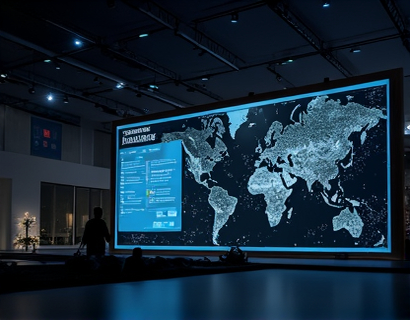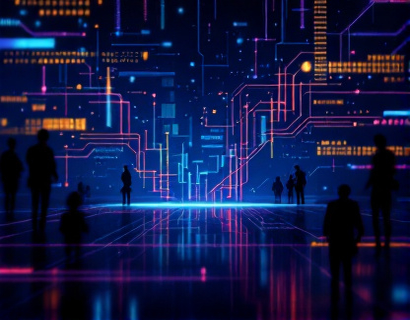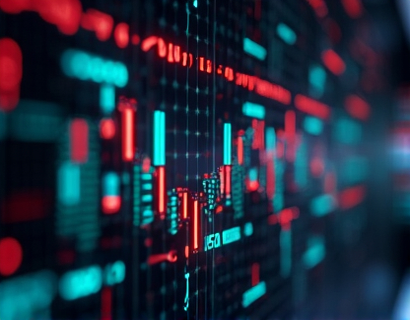Next-Gen QR Code Technology: Transforming Business and Social Media Engagement for Modern Brands
In the rapidly evolving digital landscape, brands are constantly seeking innovative ways to enhance their online presence and engage more effectively with their audience. One such technology that has emerged as a game-changer is the next-generation QR code, offering customizable and intuitive solutions that streamline information sharing and boost customer interaction. These advanced QR codes are not just a simple upgrade from their predecessors but a transformative tool that can significantly impact business and social media engagement.
The traditional QR code, while revolutionary in its time, has limitations that next-gen QR codes overcome. Next-gen QR codes, often referred to as enhanced or intelligent QR codes, provide a more robust and versatile platform for businesses and social media managers. These codes can store a larger amount of data, support multiple formats, and offer dynamic content updates without the need to regenerate the entire code. This flexibility is crucial in a world where information needs to be up-to-date and relevant.
Enhanced Data Storage Capabilities
One of the most significant advancements in next-gen QR codes is their increased data storage capacity. While standard QR codes can hold up to 7,089 numeric characters or 4,296 alphanumeric characters, next-gen versions can store much more. This expanded capacity allows businesses to include detailed information such as comprehensive product descriptions, extensive FAQs, and even multimedia content like videos and audio clips. For instance, a brand can embed a next-gen QR code on a product package that, when scanned, not only directs the user to the product's website but also provides a detailed video demonstration and customer reviews.
The ability to store more data means that brands can offer richer, more engaging experiences to their customers. Instead of just a simple link, a next-gen QR code can serve as a mini-portal to a wealth of information, enhancing the user's understanding and interest in the brand. This is particularly beneficial for industries like real estate, where detailed property information, including floor plans, neighborhood data, and customer testimonials, can be easily accessed through a single code.
Dynamic Content Updates
Another key feature of next-gen QR codes is their dynamic nature. Unlike static QR codes that cannot be changed once printed, dynamic QR codes can be updated in real-time through a centralized management system. This means that brands can easily modify the content linked to a QR code without the need to reprint materials. For example, a company can update promotional offers, new product launches, or event details seamlessly, ensuring that customers always have access to the most current information.
This dynamic updating capability is especially valuable for businesses that operate in fast-paced environments, such as retail and hospitality. Imagine a hotel chain that can update room availability, special offers, and local attraction recommendations on the fly, providing guests with the latest and most relevant information at their fingertips. This level of flexibility not only saves time and resources but also enhances the customer experience by providing timely and accurate information.
Improved User Experience
The user experience is a critical factor in the success of any digital engagement strategy. Next-gen QR codes are designed to improve this experience through faster scanning times and more intuitive designs. Advanced algorithms and optimized encoding techniques ensure that next-gen QR codes can be scanned quickly, even in low-light conditions or when printed on various surfaces. This speed reduces user frustration and increases the likelihood of engagement.
Moreover, next-gen QR codes can be customized with different shapes, colors, and logos, making them more visually appealing and brand-aligned. This customization option allows brands to integrate QR codes seamlessly into their marketing materials, packaging, and physical spaces, enhancing brand recognition and consistency. For instance, a fashion brand can design QR codes that match their color palette and logo, placing them on clothing tags or in store displays to create a cohesive and professional look.
Enhanced Analytics and Tracking
With the rise of data-driven decision-making, the ability to track and analyze user interactions is invaluable. Next-gen QR codes come equipped with advanced analytics and tracking features that provide insights into how and when codes are scanned, where they are used, and what actions users take after scanning. This data can be invaluable for businesses looking to optimize their marketing strategies and improve customer engagement.
For example, a brand can use analytics to determine which QR codes are generating the most traffic and conversions, allowing them to focus their efforts on the most effective placements and campaigns. Additionally, tracking user behavior post-scan can help identify which content is most engaging, enabling brands to refine their offerings and content strategy. This level of insight is crucial for making informed decisions and maximizing the ROI of digital engagement efforts.
Multi-Platform Compatibility
In today's multi-device world, ensuring that digital engagement tools work seamlessly across various platforms is essential. Next-gen QR codes are designed to be compatible with a wide range of devices, including smartphones, tablets, and even some smart devices. This compatibility ensures that users can scan codes effortlessly, regardless of the device they are using. Whether a customer is using an iOS or Android device, the QR code will function smoothly, providing a consistent and reliable experience.
Furthermore, next-gen QR codes can be integrated with various digital platforms and systems, such as CRM software, e-commerce platforms, and social media channels. This integration allows for a more cohesive and streamlined customer journey. For instance, a QR code scanned in a physical store can redirect the user to a personalized shopping experience on the brand's website, complete with recommendations based on their in-store interactions.
Social Media Integration
Social media remains a pivotal channel for brand engagement, and next-gen QR codes offer seamless integration with these platforms. Brands can use QR codes to drive traffic to their social media profiles, encourage shares and interactions, and even facilitate direct messaging. This integration not only enhances online visibility but also fosters a stronger community around the brand.
For example, a music label can place a next-gen QR code on concert posters that, when scanned, takes users directly to the artist's social media page, where they can follow the artist, check out upcoming shows, and engage with fans. This direct linkage simplifies the process of building and maintaining a social media following, making it easier for brands to grow their online presence.
Security and Trust
Security is a paramount concern in digital interactions, and next-gen QR codes address this by incorporating advanced security features. These codes can include encryption and authentication mechanisms to ensure that the content they link to is safe and trustworthy. This is particularly important for brands that handle sensitive information or transactions, such as financial services or healthcare providers.
By using secure QR codes, brands can build trust with their customers, assuring them that their data is protected. This trust is crucial for maintaining customer loyalty and encouraging repeat interactions. For instance, a financial institution can use secure QR codes for mobile banking services, ensuring that users feel confident when accessing their accounts through a simple scan.
Environmental Sustainability
In an era where sustainability is increasingly important, next-gen QR codes offer an eco-friendly alternative to traditional printing methods. By reducing the need for extensive printed materials, brands can lower their carbon footprint and contribute to environmental conservation. Digital information accessed via QR codes eliminates the need for paper, ink, and physical distribution, making it a more sustainable choice.
For example, a travel agency can replace printed brochures with QR codes on their website or in digital catalogs. This not only reduces paper waste but also allows for easier updates and management of content. Customers can access detailed travel information, book flights and hotels, and view destination guides all through a single, sustainable solution.
Case Studies and Real-World Applications
To better understand the impact of next-gen QR codes, let's explore some real-world applications across different industries.
In the retail sector, a luxury fashion brand implemented next-gen QR codes on their high-end clothing items. When scanned, these codes not only directed customers to the product's detailed page on the brand's website but also offered virtual try-on features and personalized styling recommendations. This enhanced experience not only increased customer engagement but also boosted sales by providing a more immersive shopping experience.
In the healthcare industry, a hospital chain used next-gen QR codes on patient information cards. These codes linked to electronic health records, allowing medical staff to access patient information quickly and securely. This streamlined process improved patient care and operational efficiency, demonstrating the practical benefits of next-gen QR codes in critical environments.
In the educational sector, a university utilized next-gen QR codes on campus maps to provide students and visitors with real-time information on events, facilities, and navigation. The dynamic content updates ensured that users always had the most current information, enhancing their campus experience and engagement with the university.
Future Trends and Innovations
As technology continues to evolve, the potential for next-gen QR codes is vast. One exciting trend is the integration of augmented reality (AR) capabilities. Imagine scanning a QR code that not only provides information but also triggers an AR experience, such as a 3D model of a product or an interactive game. This fusion of physical and digital worlds can create highly engaging and memorable experiences for users.
Another area of innovation is the incorporation of blockchain technology to enhance security and transparency. By using blockchain, next-gen QR codes can ensure that the information they link to is tamper-proof and verifiable, adding an extra layer of trust and reliability. This is particularly relevant for industries dealing with supply chain management, where transparency and traceability are crucial.
Additionally, the development of QR codes that can be read by emerging technologies like smart glasses and wearables is on the horizon. This will further expand the possibilities for hands-free and seamless interactions, making next-gen QR codes even more versatile and user-friendly.
Conclusion
Next-gen QR code technology represents a significant leap forward in digital engagement for modern brands. With their enhanced data storage, dynamic content updates, improved user experience, advanced analytics, multi-platform compatibility, social media integration, security features, and environmental sustainability, these codes offer a comprehensive solution for businesses and social media managers aiming to enhance their online presence and customer interactions. As brands continue to seek innovative ways to connect with their audience, next-gen QR codes are poised to play a pivotal role in shaping the future of digital engagement.










































